[nextpage title=”Introduction”]
adapted contax N 17-35mm f2.8 v Nikon AF-S 17-35mm f2.8
[published in two parts, january 2007]
For many years Canon users have sought out Zeiss and Leica lenses for optimal full frame performance. They’ve bought, sanded down, measured and modified adaptors; they’ve hacked bits out of their cameras and dremelled bits off their lenses and even poked incompatible (and unfeasible) lens barrels into their digital bodies, and all the while tolerated manual focus, manual aperture control, and unreliable metering – all in the name of a little extra magic and sparkle.
Casting about for pastures new, they looked enviously over the fence into the Contax N paddock, where nine exotic creatures of the finest pedigree have been retired before outgrowing their youth: a new breed of full frame Zeiss lenses, designed for digital, T* coated – autofocus, even – but off limits. No matter how tantalising the similarity between the N’s autofocus and Canon’s USM, or how close the mounts may be in physical size, adapting the lenses for EF just isn’t possible: the similarity in size is half the problem. Some speculated: if only the electronics could be persuaded to talk the same language – surely the mount could be replaced? But mostly it was just talk: the idea of using autofocus Zeiss lenses on a 1Ds II or 5D remained a pipe dream . . . until late 2006.
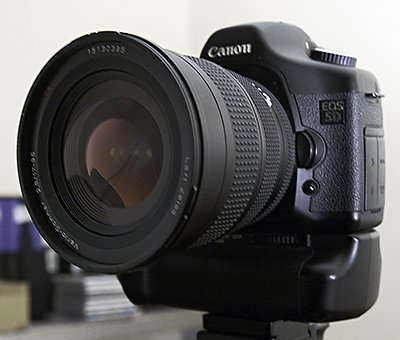 Deciphering the communication protocols and solving the mechanical issues raised by the prospect of such a conversion took Bo-Ming Tong of Vancouver-based Conurus more than a year, but by the winter, he was turning around Mark II conversions of 24-85mm Contax N lenses to the delight of a small number of Canon users. When used on a 1Ds II, the lenses work just like a Canon L: auto focus, auto aperture, and all the Zeiss mojo you can shake a stick at.
Deciphering the communication protocols and solving the mechanical issues raised by the prospect of such a conversion took Bo-Ming Tong of Vancouver-based Conurus more than a year, but by the winter, he was turning around Mark II conversions of 24-85mm Contax N lenses to the delight of a small number of Canon users. When used on a 1Ds II, the lenses work just like a Canon L: auto focus, auto aperture, and all the Zeiss mojo you can shake a stick at.
Among Contax users, the 85mm 1.4, 100mm Makro Sonnar and 17-35mm f2.8 have acquired legendary reputations. The 17-35/2.8 in particular is a fearsome beast: almost a kilogram in weight and taking a 95mm filter thread. But it was widely considered by those who used them, such as Irakly Shanidze of Luminous Landscape, to be the finest of its kind. As soon as the conversion became available, I was as close to the front of the queue as possible.
 The conversion requires a few modestly priced donor components from Sigma, and the price varies somewhat from lens to lens, but what arrived back from Canada after a few weeks was a beautifully converted lens that slotted onto a Canon body and just worked. The standard of the finishing was superb, and there were no electronics gremlins to report: it just worked. The lens itself has a presence and build quality that is almost unequalled. There appear to be no controls on the lens bar aperture and zoom, but Contax N users (apparently) know that manual focus mode is accessed by setting the lens to f22. I didn’t, until I was clued in by a promptly returned email from Conurus.
The conversion requires a few modestly priced donor components from Sigma, and the price varies somewhat from lens to lens, but what arrived back from Canada after a few weeks was a beautifully converted lens that slotted onto a Canon body and just worked. The standard of the finishing was superb, and there were no electronics gremlins to report: it just worked. The lens itself has a presence and build quality that is almost unequalled. There appear to be no controls on the lens bar aperture and zoom, but Contax N users (apparently) know that manual focus mode is accessed by setting the lens to f22. I didn’t, until I was clued in by a promptly returned email from Conurus.
Assuming it was safe to compare the lens using Zeiss’ own data, comparing the zoom to better attested primes in Contax/Yashica mounts, here are some comparisons. First, the Contax N 17-35mm at 17mm compared with the older Distagon 18mm:

On average, then, we might expect the zoom to match or outperform the prime, but there is a curious irregularity about the N’s MTF data: from the outset we should be mindful of the fact that this is a lens designed for a 6MP full frame sensor: a pretty easy gig compared with a 1Ds II. Here is Zeiss’ data comparing the 25mm Distagon with the zoom at 24mm:

Finally, at the maximum extent of its reach, here’s the N zoom compared to the superb little 35mm f2.8 Distagon . . .
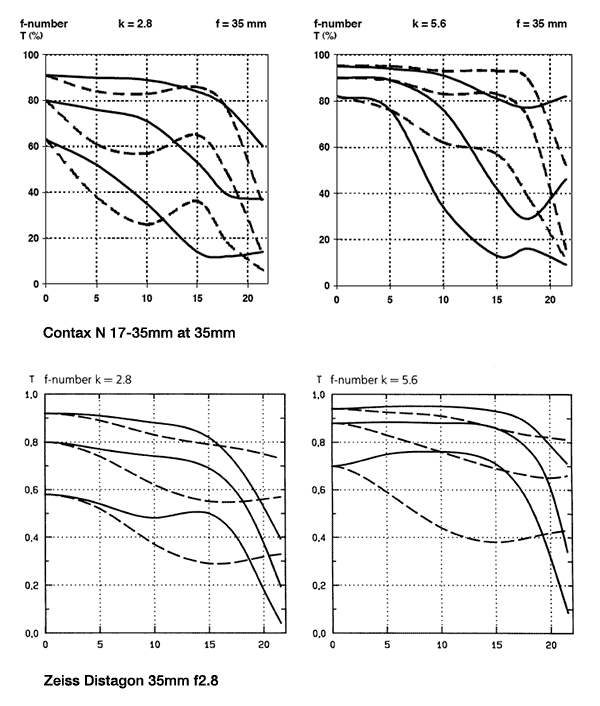
So it’ll not replace your favourite 35mm prime, then. Part I of this review will demonstrate what these squiggles look like in real life shooting conditions in the 17mm to 21mm range. Part II will look at 24mm and 35mm. Naturally, its logical competitor here is the Nikon 17-35mm f2.8 AFS zoom which has acquitted itself superbly against all comers thus far. We will also be featuring a different sample of the same lens compared with the Zeiss 21mm, Zeiss 15mm and Canon 16-35mm L next week, thanks to the efforts of Andrew Gough, who flew to Vancouver to collect the very first converted N 17-35mm ever sold.
[nextpage title=”17mm f2.8 Performance”]
Performance at 17mm: f2.8 (Centre Frame)
Testing these lenses at 17mm was a little weird. Without much further comment, I’m going to display 100% samples from the centre of the image circle, followed by snippets taken from areas 10mm and 20mm from the sweet spot (off centre and corner frame samples). Ominously, we begin with a drawn result: the Nikon’s better contrast balancing the Contax’ fractionally higher resolution at this aperture.
 |
 |
| Contax N 17-35mm at 17mm/f2.8 | Nikon 17-35mm AFS at 17mm/f2.8 |
|
1 point
|
1 points
|
Performance at 17mm: f2.8 (10mm off-centre, left side)
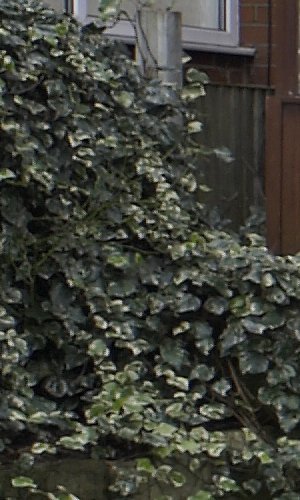 |
 |
| Contax N 17-35mm at 17mm/f2.8 | Nikon 17-35mm AFS at 17mm/f2.8 |
|
0 points
|
1 point
|
Performance at 17mm: f2.8 (Upper left corner)
 |
 |
| Contax N 17-35mm at 17mm/f2.8 | Nikon 17-35mm AFS at 17mm/f2.8 |
|
1 point
|
0 points
|
Truly astounding corner performance from the Contax N, wide open at 17mm, and not a trace of lateral chromatic aberration. But what happened to the mid-frame? Are those unorthodox MTF charts suddenly starting to make sense?
[nextpage title=”17mm / f4 Performance”]
Performance at 17mm: f4 (Centre Frame)
 |
 |
| Contax N 17-35mm at 17mm/f4 | Nikon 17-35mm AFS at 17mm/f4 |
|
1 point
|
0 points
|
Performance at 17mm: f4 (10mm off-centre, right side)
 |
 |
| Contax N 17-35mm at 17mm/f4 | Nikon 17-35mm AFS at 17mm/f4 |
|
0 points
|
1 point
|
Performance at 17mm: f4 (Upper left corner)
 |
 |
| Contax N 17-35mm at 17mm/f4 | Nikon 17-35mm AFS at 17mm/f4 |
|
1 point
|
0 points
|
Note that the Contax’ fairly pronounced vignetting at f2.8 is greatly reduced, but not quite absent, at f4. The gulf between their corner performance remains astonishing. It’s interesting to compare these results with those of the Canon 16-35L v Nikon 17-35mm f2.8 test, as well as the Contax 17-35 v Canon 16-35mm test. The Canon’s corners are pitched between these two in the f2.8–f4 range. We also see the same discrepancy between the lenses’ resolution which varies significantly across the frame – and not in ways one might expect.
[nextpage title=”17mm / f5.6 Performance”]
Performance at 17mm: f5.6 (Centre Frame)
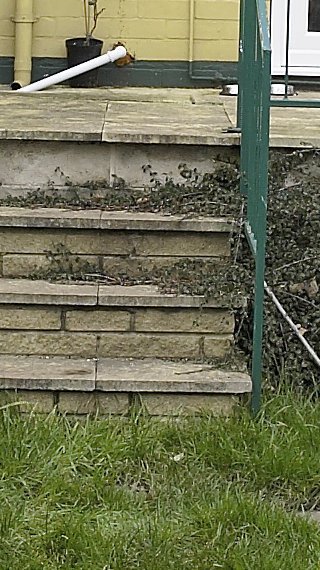 |
 |
| Contax N 17-35mm at 17mm/f5.6 | Nikon 17-35mm AFS at 17mm/f5.6 |
|
1 point
|
0 points
|
Performance at 17mm: f5.6 (10mm off-centre, right side)
 |
 |
| Contax N 17-35mm at 17mm/f5.6 | Nikon 17-35mm AFS at 17mm/f5.6 |
|
0 points
|
1 point
|
Performance at 17mm: f5.6 (Upper left corner)
 |
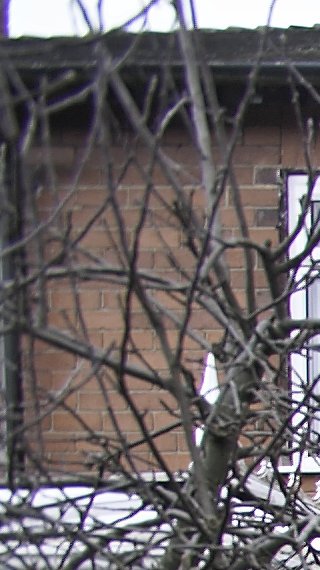 |
| Contax N 17-35mm at 17mm/f5.6 | Nikon 17-35mm AFS at 17mm/f5.6 |
|
1 point
|
0 points
|
There’s barely any point stopping the Contax down further than this because, amazingly, at 17mm / f5.6 it renders a corner equally as sharp as the centre of frame, which makes it practically unique at this focal length. But that irregularity in the inner ring of the image circle persists, even here, two stops down. The shortcoming is acutely exploited by the Nikon, which displays a diametrically opposite failing: it struggles to render clean centre frames and corners, but excels precisely where the Contax stumbles.
Note also the strong blue/yellow lateral CA in the Nikon shot, and the Contax’ uncharacteristic tendency to warm colour: not at all Teutonic. Again, here bear in mind that the Nikon has a slight tendency to render on the cool side.
[nextpage title=”17mm / f8 Resolution”]
Performance at 17mm: f8 (Centre Frame)
 |
 |
| Contax N 17-35mm at 17mm/f8 | Nikon 17-35mm AFS at 17mm/f8 |
|
1 point
|
1 point
|
Performance at 17mm: f8 (10mm off-centre, right side)
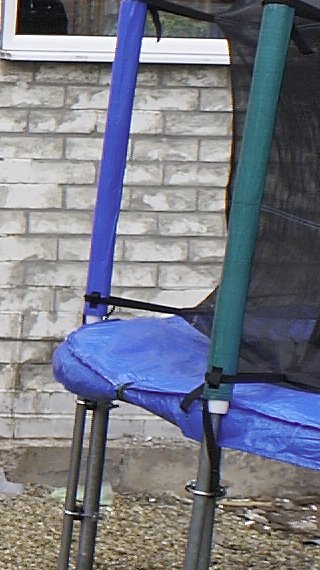 |
 |
| Contax N 17-35mm at 17mm/f8 | Nikon 17-35mm AFS at 17mm/f8 |
|
0 points
|
1 point
|
Performance at 17mm: f8 (lower right corner)
 |
 |
| Contax N 17-35mm at 17mm/f8 | Nikon 17-35mm AFS at 17mm/f8 |
|
1 point
|
0 points
|
More of the same, I’m afraid: fabulous corners from the Zeiss; still with the resolution trough. By f8, the Nikon has sorted out its focal plane ripples and is as good centre frame as you could wish, though it must be stopped down further yet to render a sharp corner.
[nextpage title=”17mm / f11 Performance”]
Performance at 17mm: f11 (Centre Frame)
 |
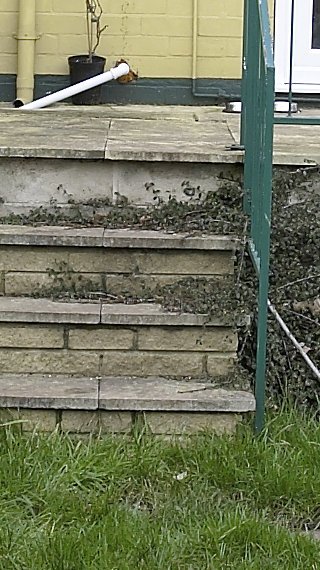 |
| Contax N 17-35mm at 17mm/f11 | Nikon 17-35mm AFS at 17mm/f11 |
|
1 point
|
1 point
|
Performance at 17mm: f11 (10mm off-centre, left side)
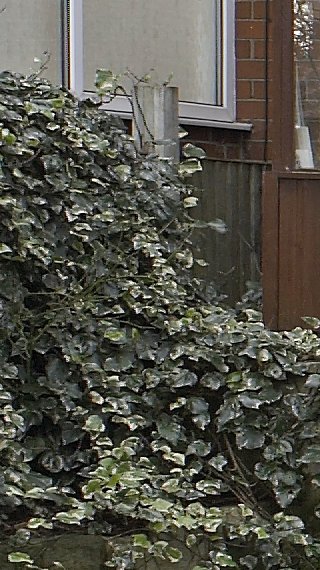 |
 |
| Contax N 17-35mm at 17mm/f11 | Nikon 17-35mm AFS at 17mm/f11 |
|
0 points
|
1 point
|
Performance at 17mm: f11 (upper right corner)
 |
 |
| Contax N 17-35mm at 17mm/f11 | Nikon 17-35mm AFS at 17mm/f11 |
|
1 point
|
0 points
|
Later on, we’ll see in greater detail the Nikon’s CA gremlins in the 17–19mm range, but the Contax 17-35mm is as clean as a whistle. The Nikon predictably spreads its high-resolution rendering into the corners as it is stopped down, and by f11 is (almost) capable of what the Contax could do at f5.6. Even here, though, with a full frame sensor it stops just short of delivering entirely to the cornermost pixel, enabling the Contax to sneak an extra point. As at was at f8, centre frames at f11 are inseparable.
At all apertures, the Contax fails to deliver uniformly across the frame. I strongly suspect, however, that most users won’t notice: without the same image produced by a Zeiss 21mm or Nikon 17-35mm jammed up against it, the Contax looks great. Trouble is: once you know the flaw is there, it won’t go away.
[nextpage title=”17mm / f16 Performance”]
Performance at 17mm: f16 (centre frame)
 |
 |
| Contax N 17-35mm at 17mm/f16 | Nikon 17-35mm AFS at 17mm/f16 |
|
0 points
|
1 point
|
Performance at 17mm: f16 (10mm off-centre, left side)
 |
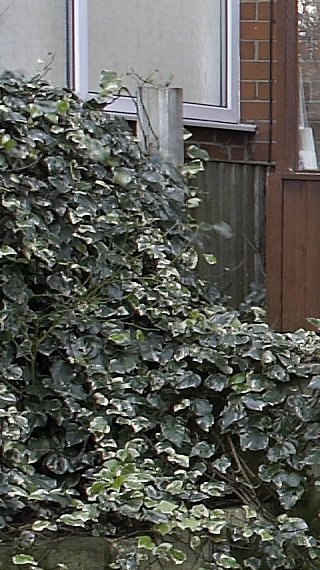 |
| Contax N 17-35mm at 17mm/f16 | Nikon 17-35mm AFS at 17mm/f16 |
|
0 points
|
1 point
|
Performance at 17mm: f16 (upper left corner)
 |
 |
| Contax N 17-35mm at 17mm/f16 | Nikon 17-35mm AFS at 17mm/f16 |
|
1 point
|
1 point
|
At last the Nikon’s corners sharpen sufficiently to be acceptable. This, combined with its greater immunity to diffraction effects, gives it all the honours at this aperture. Many Nikon lenses, and this one in particular, remain completely useable at f16 – an aperture at which many Canon, and even Leica, lenses are over the hill. Note also that the Nikon 17-35’s lateral CA persists in the corners at all apertures down at 17mm.
So what have we learned? The wider the lens, the greater the curvature in the focal plane. Both of these lenses effectively have ‘ripples’ in their focal planes: waveform distortions of field sharpness that are quite unlike the conventional ‘linear’ fall-off in resolution one expects as the edge of the image circle is approached. What makes comparison so difficult in this instance is that the peaks and troughs are diametrically out of phase: where the Contax is at its best, the Nikon is at its worst, and vice versa. Borrowing the framework of an MTF chart, their performance at 17mm can be summarised thus:
 Without wishing to come on all Open University, in ranges A and C, the Contax 17-35mm has significantly higher resolution, whereas across all of B the Nikon appears sharper. If we consider these lines as averaged MTF graphs, we wouldn’t normally expect to see either a dip in centre frame resolution (as we saw with the Canon 24mm L), or a dip in the 10mm range. We would also expect these lines to flatten and pull together at smaller apertures, where diffraction effects limit the maximum resolution and stopping down raises the resolution of the outer image circles – but in comparing these lenses the pattern persists right up to f16. Picking a winner at this focal length is difficult: for resolution, they must be considered about even. But in all other ways the Contax N is better: slightly better controlled barrel distortion (see Part II), far superior flare resistance, much better CA control, and of course it does automatically what the Nikon can only achieve manually. We move on to 21mm . . . .
Without wishing to come on all Open University, in ranges A and C, the Contax 17-35mm has significantly higher resolution, whereas across all of B the Nikon appears sharper. If we consider these lines as averaged MTF graphs, we wouldn’t normally expect to see either a dip in centre frame resolution (as we saw with the Canon 24mm L), or a dip in the 10mm range. We would also expect these lines to flatten and pull together at smaller apertures, where diffraction effects limit the maximum resolution and stopping down raises the resolution of the outer image circles – but in comparing these lenses the pattern persists right up to f16. Picking a winner at this focal length is difficult: for resolution, they must be considered about even. But in all other ways the Contax N is better: slightly better controlled barrel distortion (see Part II), far superior flare resistance, much better CA control, and of course it does automatically what the Nikon can only achieve manually. We move on to 21mm . . . .
[nextpage title=”21mm / f2.8 Performance”]
Performance at 21mm: f2.8 (centre frame)
 |
 |
| Contax N 17-35mm at 21mm/f2.8 | Nikon 17-35mm AFS at 21mm/f2.8 |
|
0 points
|
1 point
|
Performance at 21mm: f2.8 (10mm off-centre, left side)
 |
 |
| Contax N 17-35mm at 21mm/f2.8 | Nikon 17-35mm AFS at 21mm/f2.8 |
|
0 points
|
1 point
|
Performance at 21mm: f2.8 (upper left corner)
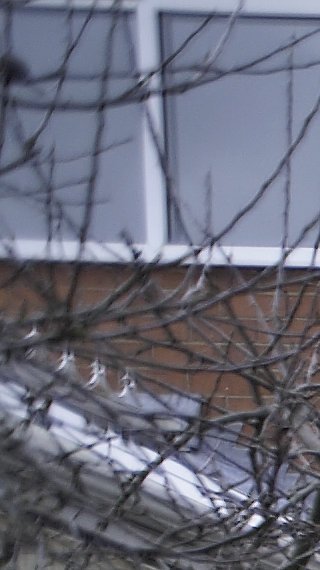 |
 |
| Contax N 17-35mm at 21mm/f2.8 | Nikon 17-35mm AFS at 21mm/f2.8 |
|
1 point
|
0 points
|
Some of the advantage the Contax enjoyed over the Nikon at 17mm is whittled away at 21mm. The 17-35mm N still has marginally better corners, but the margin is diminished, and the Nikon is generally better across the frame.
[nextpage title=”21mm / f4 Performance”]
Performance at 21mm: f4 (centre frame)
 |
 |
| Contax N 17-35mm at 21mm/f4 | Nikon 17-35mm AFS at 21mm/f4 |
|
0 points
|
1 point
|
Performance at 21mm: f4 (10mm off-centre, right side)
 |
 |
| Contax N 17-35mm at 21mm/f4 | Nikon 17-35mm AFS at 21mm/f4 |
|
0 points
|
1 point
|
Performance at 21mm: f4 (upper right corner)
 |
 |
| Contax N 17-35mm at 21mm/f4 | Nikon 17-35mm AFS at 21mm/f4 |
|
1 point
|
0 points
|
As at f2.8, the Nikon has all the kudos until we consider the corner. Note in its defense, however, that the Nikon 17-35mm’s CA blight at 17mm is much improved at 21mm. It’s still there, but it’s on the way out. The gulf separating the two with regard to corner performance is also narrowing: an early sign that the Contax N isn’t going to have this comparison all its own way.
[nextpage title=”21mm / f5.6 Performance”]
Performance at 21mm: f5.6 (centre frame)
 |
 |
| Contax N 17-35mm at 21mm/f5.6 | Nikon 17-35mm AFS at 21mm/f5.6 |
|
0 points
|
1 point
|
Performance at 21mm: f5.6 (10mm off-centre, left side)
 |
 |
| Contax N 17-35mm at 21mm/f5.6 | Nikon 17-35mm AFS at 21mm/f5.6 |
|
0 points
|
1 point
|
Performance at 21mm: f5.6 (upper right corner)
 |
 |
| Contax N 17-35mm at 21mm/f5.6 | Nikon 17-35mm AFS at 21mm/f5.6 |
|
1 point
|
0 points
|
No change from f4 here . . .
[nextpage title=”21mm / f8 Performance”]
Performance at 21mm: f8 (centre frame)
 |
 |
| Contax N 17-35mm at 21mm/f8 | Nikon 17-35mm AFS at 21mm/f8 |
|
0 points
|
1 point
|
Performance at 21mm: f8 (10mm off-centre, left side)
 |
 |
| Contax N 17-35mm at 21mm/f8 | Nikon 17-35mm AFS at 21mm/f8 |
|
0 points
|
1 point
|
Performance at 21mm: f8 (upper left corner)
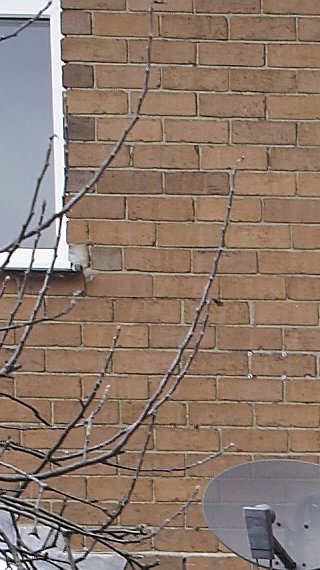 |
 |
| Contax N 17-35mm at 21mm/f8 | Nikon 17-35mm AFS at 21mm/f8 |
|
0 points
|
1 point
|
But by f8, the Nikon 17-35mm is sweeping the board: sharper across the whole frame: more open midtones, better microcontrast – it’s even more colour-neutral. The Contax’ sole remaining advantage is CA control: it’s still present in the Nikon capture.
[nextpage title=”21mm / f11 Performance”]
Performance at 21mm: f11 (centre frame)
 |
 |
| Contax N 17-35mm at 21mm/f11 | Nikon 17-35mm AFS at 21mm/f11 |
|
1 point
|
1 point
|
Performance at 21mm: f11 (10mm off-centre, left side)
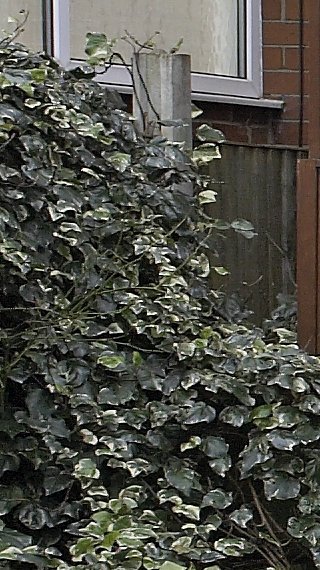 |
 |
| Contax N 17-35mm at 21mm/f11 | Nikon 17-35mm AFS at 21mm/f11 |
|
0 points
|
1 point
|
Performance at 21mm: f11 (lower right corner)
 |
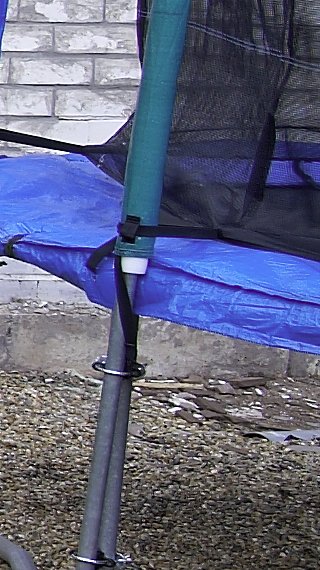 |
| Contax N 17-35mm at 21mm/f11 | Nikon 17-35mm AFS at 21mm/f11 |
|
0 points
|
1 point
|
More of the same at f11, at which aperture the Nikon 17-35mm starts to deliver acceptably sharp corners.
[nextpage title=”21mm / f16 Performance”]
Performance at 21mm: f16 (centre frame)
 |
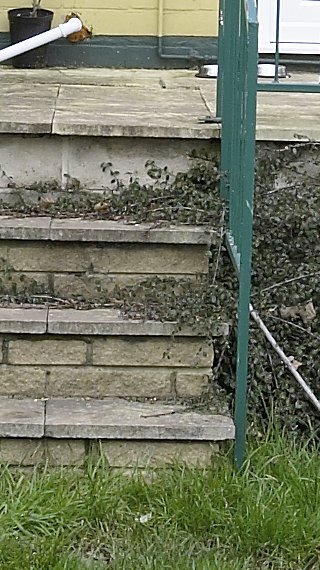 |
| Contax N 17-35mm at 21mm/f16 | Nikon 17-35mm AFS at 21mm/f16 |
|
0 points
|
1 point
|
Performance at 21mm: f16 (10mm off-centre, left side)
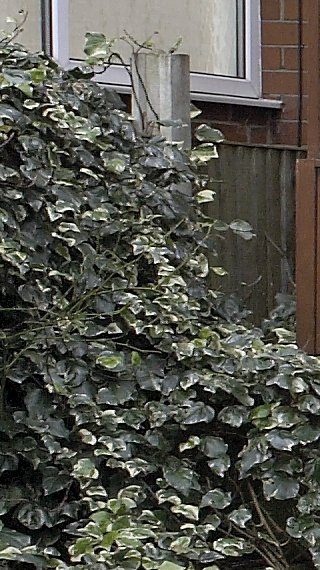 |
 |
| Contax N 17-35mm at 21mm/f16 | Nikon 17-35mm AFS at 21mm/f16 |
|
0 points
|
1 point
|
Performance at 21mm: f16 (lower right corner)
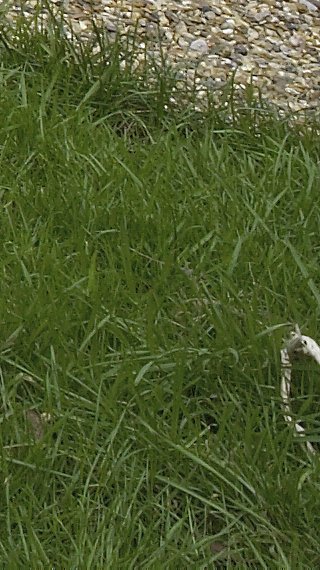 |
 |
| Contax N 17-35mm at 21mm/f16 | Nikon 17-35mm AFS at 21mm/f16 |
|
1 point
|
1 point
|
As expected, most of the differences have flattened out by f16. As at 17mm, it remains impressive that the Nikon resists diffraction effects so that the only upshot visible to the 5D of stopping down from f11 is a gain in corner resolution.
Thus far, then, we have an unprecedented performance by the Contax N at 17mm, but not one that we could really say put clear blue water between it and the Nikon zoom. At 21mm, we have a more evenly fought contest, but the Contax annulus horribilis strikes again: a torus of reduced resolution taking the shine off an otherwise impeccable rendition – and at 21mm, its ability to render a sharp corner isn’t quite as unique: the Nikon owns this focal length among mere mortals (the Zeiss 21mm is now understood to be a Xeelee artefact).
[nextpage title=”24mm / f2.8 Performance (including Canon 24L)”]
Performance at 24mm: f2.8 (Centre Frame)
At 24mm we stir into the mix the winner of the 24mm World Cup: the Canon 24mm f1.4 L.
 |
 |
 |
| Contax N 17-35mm at 24mm/f2.8 | Nikon 17-35mm AFS at 24mm/f2.8 | Canon 24mm f1.4 L / f2.8 |
|
1 point
|
2 points
|
0 points |
If you’ve seen the final of the 24mm group test, you’ll know that the Canon overcame the substantial handicap of suffering the same focal plane variation we’ve seen in both the Nikon and Contax zooms. This sample, currently being examined by Canon, has a pronounced soft spot centre frame up to f5.6 – the opposite of a number of other reviews which have demonstrated excellent centre frame performance but soft corners. As you’ll see, this one is anything but. Up in the 24mm range, the Nikon has reversed the centre frame advantage enjoyed by the Contax in the 17-21mm range, and now looks a fraction sharper wide open.
Performance at 24mm: f2.8 (10mm off-centre, left side)
 |
 |
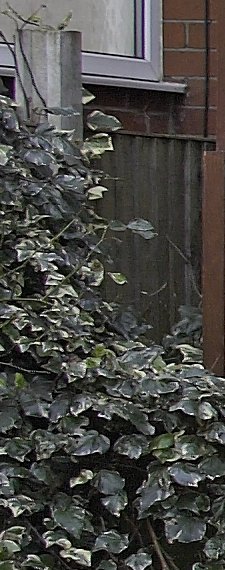 |
| Contax N 17-35mm at 24mm/f2.8 | Nikon 17-35mm AFS at 24mm/f2.8 | Canon 24mm f1.4 L / f2.8 |
|
0 points
|
1 point
|
2 points |
Performance at 24mm: f2.8 (Upper left corner)
 |
 |
 |
| Contax N 17-35mm at 24mm/f2.8 | Nikon 17-35mm AFS at 24mm/f2.8 | Canon 24mm f1.4 L / f2.8 |
|
0 points
|
1 point
|
2 points |
That’s how to render a corner at f2.8: the Canon prime again excels everywhere except bang in the middle, even though we’re two stops down from max aperture here. The Contax N 17-35mm isn’t really happy at this focal length and struggles to outperform the Nikon in any department.
[nextpage title=”24mm / f4 Performance (including Canon 24L)”]
Performance at 24mm: f5.6 (Centre Frame)
 |
 |
 |
| Contax N 17-35mm at 24mm/f5.6 | Nikon 17-35mm AFS at 24mm/f5.6 | Canon 24mm f1.4 L / f5.6 |
|
0 points
|
2 points
|
1 point |
We weren’t learning anything new at f4, so I’ve skipped on to f5.6, at which point the Nikon still leads the pack centre frame (better even than the Canon, which is only just shaking off its central hiccups). It’s a struggle to get anything as impressive from the Contax at this focal length, which seems to be stuck in the doldrums somehow. Most wide zoom lenses have sweet spots and out-of-favour moments: the Contax isn’t keen on 24mm.
Performance at 24mm: f5.6 (10mm off-centre, left side)
 |
 |
 |
| Contax N 17-35mm at 24mm/f5.6 | Nikon 17-35mm AFS at 24mm/f5.6 | Canon 24mm f1.4 L / f5.6 |
|
0 points
|
1 point
|
2 points |
Performance at 24mm: f5.6 (Upper left corner)
 |
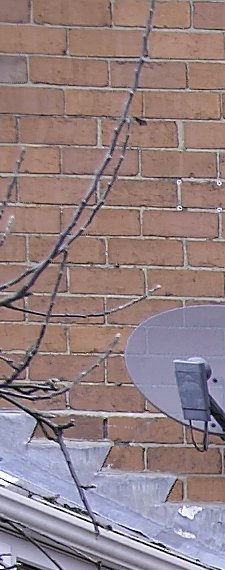 |
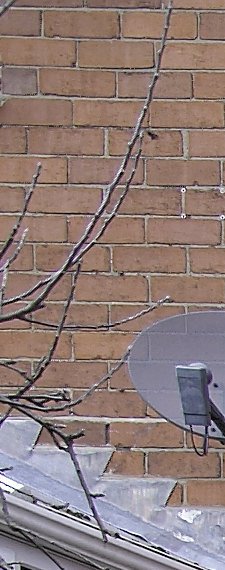 |
| Contax N 17-35mm at 24mm/f5.6 | Nikon 17-35mm AFS at 24mm/f5.6 | Canon 24mm f1.4 L / f5.6 |
|
0 points
|
1 point
|
2 points |
Again the Canon demonstrates why it won the ‘Best 24mm’ award. Let’s hope it doesn’t return from with all that loveliness calibrated away. Still suffering from CA, though.
[nextpage title=”24mm / f8 Performance (including Canon 24 L)”]
Performance at 24mm: f8 (Centre Frame)
 |
 |
 |
| Contax N 17-35mm at 24mm/f8 | Nikon 17-35mm AFS at 24mm/f8 | Canon 24mm f1.4 L / f8 |
|
0 points
|
1 point
|
2 points |
By f8, the Zeiss Contax has improved significantly centre frame, but the Canon L has moved to the next level, just edging out the Nikon zoom.
Performance at 24mm: f8 (10mm off-centre, right side)
 |
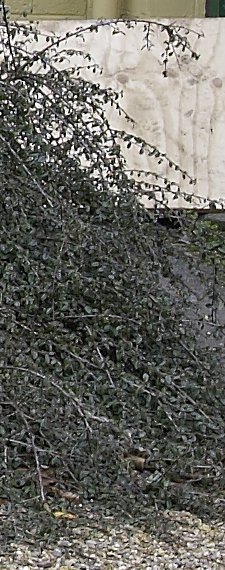 |
 |
| Contax N 17-35mm at 24mm/f8 | Nikon 17-35mm AFS at 24mm/f8 | Canon 24mm f1.4 L / f8 |
|
1 point
|
0 points
|
2 points |
Performance at 24mm: f8 (Upper right corner)
 |
 |
 |
| Contax N 17-35mm at 24mm/f8 | Nikon 17-35mm AFS at 24mm/f8 | Canon 24mm f1.4 L / f8 |
|
0 points
|
1 point
|
2 points |
The really good news is that by 24mm / f8, the Contax lens has finally lost its annulus horribilis: the torus of reduced resolution that made comparison with the Nikon 17-35mm so difficult at shorter focal lengths. Until the Zeiss ZF 25mm arrives, it’s tough to see how there is much margin for improvement, resolution-wise, in the Canon 24L at f8. The Nikon is very close behind.
[nextpage title=”24mm / f11 Performance (including Canon 24 L)”]
Performance at 24mm: f11 (Centre Frame)
 |
 |
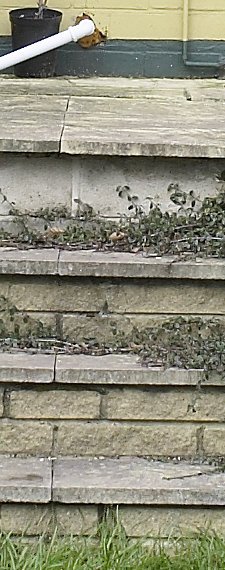 |
| Contax N 17-35mm at 24mm/f11 | Nikon 17-35mm AFS at 24mm/f11 | Canon 24mm f1.4 L / f11 |
|
0 points
|
1 point
|
2 points |
Performance at 24mm: f11 (10mm off-centre, right side)
 |
 |
 |
| Contax N 17-35mm at 24mm/f11 | Nikon 17-35mm AFS at 24mm/f11 | Canon 24mm f1.4 L / f11 |
|
0 points
|
1 point
|
2 points |
Performance at 24mm: f11 (Upper left corner)
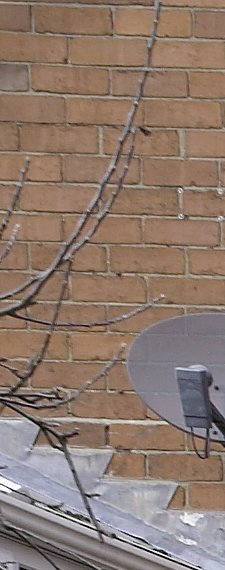 |
 |
 |
| Contax N 17-35mm at 24mm/f11 | Nikon 17-35mm AFS at 24mm/f11 | Canon 24mm f1.4 L / f11 |
|
0 points
|
1 point
|
2 points |
Pretty much a repeat of the f8 results, here: Canon followed by Nikon followed by Zeiss. Given the way the results have flattened out, and based on the results obtained at 21mm, I shan’t bore you with any more results at 24mm: suffice it to say that f16 reprises what we’ve already seen at f8 and f11.
[nextpage title=”35mm / f4 Performance”]
Performance at 35mm: f4 (Centre Frame)
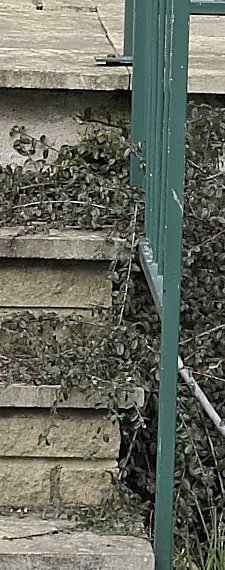 |
 |
| Contax N 17-35mm at 35mm/f4 | Nikon 17-35mm AFS at 35mm/f4 |
|
1 point
|
1 point
|
Performance at 35mm: f4 (frame edge)
 |
 |
| Contax N 17-35mm at 35mm/f4 | Nikon 17-35mm AFS at 35mm/f4 |
|
1 point
|
0 points
|
It’s well known that the Nikon 17-35mm, and the majority of zoom lenses in general, are least comfortable at the long end of their range. Notable exceptions to this rule, not a million miles from this pair, are the Leica 21-35mm and Canon 16-35mm: both of which improve at longer focal lengths. So it’s no surprise to see less than inspiring performance from our current candidates. It’s the Contax, though, that reverses its losses at 24mm with a marginally more attractive looking shot overall.
[nextpage title=”35mm / f5.6 Performance”]
Performance at 35mm: f5.6 (Centre Frame)
 |
 |
| Contax N 17-35mm at 35mm/f5.6 | Nikon 17-35mm AFS at 35mm/f5.6 |
|
0 points
|
1 point
|
Performance at 35mm: f5.6 (mid frame: Area B)
 |
 |
| Contax N 17-35mm at 35mm/f5.6 | Nikon 17-35mm AFS at 35mm/f5.6 |
|
0 points
|
1 points
|
Performance at 35mm: f5.6 (upper left corner)
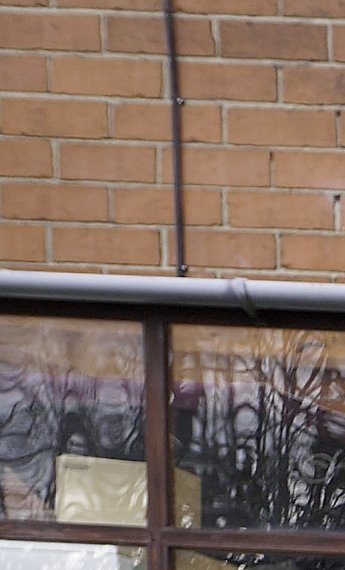 |
 |
| Contax N 17-35mm at 35mm/f5.6 | Nikon 17-35mm AFS at 35mm/f5.6 |
|
0 points
|
1 points
|
Two stops down, the Nikon once again scores over the Contax in every department.
[nextpage title=”35mm / f8 Performance”]
Performance at 35mm: f8 (Centre Frame)
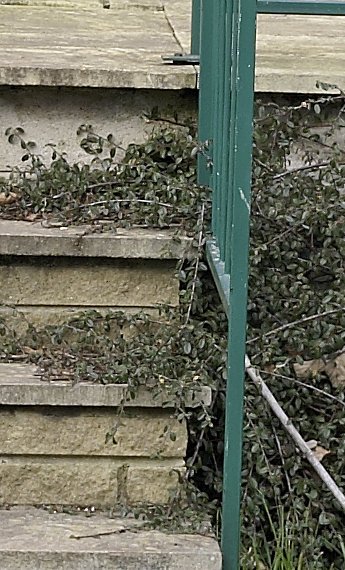 |
 |
| Contax N 17-35mm at 35mm/f8 | Nikon 17-35mm AFS at 35mm/f8 |
|
0 points
|
1 point
|
Performance at 35mm: f8 (mid frame: Area B)
 |
 |
| Contax N 17-35mm at 35mm/f8 | Nikon 17-35mm AFS at 35mm/f8 |
|
0 points
|
1 point
|
Performance at 35mm: f8 (upper right corner)
 |
 |
| Contax N 17-35mm at 35mm/f8 | Nikon 17-35mm AFS at 35mm/f8 |
|
0 points
|
1 point
|
At optimal apertures, neither of these hold a candle to a proper 35mm prime, but the Nikon would make a more acceptable substitute than the Contax, it would seem.
[nextpage title=”35mm / f11 Performance”]
Performance at 35mm: f11 (Centre Frame)
 |
 |
| Contax N 17-35mm at 35mm/f11 | Nikon 17-35mm AFS at 35mm/f11 |
|
0 points
|
1 point
|
Performance at 35mm: f11 (mid frame: Area B)
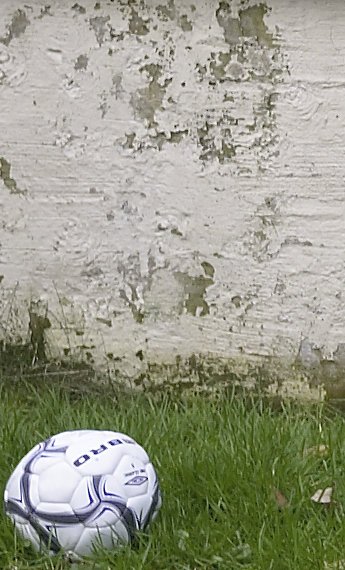 |
 |
| Contax N 17-35mm at 35mm/f11 | Nikon 17-35mm AFS at 35mm/f11 |
|
0 points
|
1 points
|
Performance at 35mm: f11 (upper right corner)
 |
 |
| Contax N 17-35mm at 35mm/f11 | Nikon 17-35mm AFS at 35mm/f11 |
|
0 points
|
1 point
|
More of the same at f11, and f16 looks similar too . . .
[nextpage title=”35mm / f16 Performance”]
Performance at 35mm: f16 (Centre Frame)
 |
 |
| Contax N 17-35mm at 35mm/f16 | Nikon 17-35mm AFS at 35mm/f16 |
|
0 points
|
1 point
|
Performance at 35mm: f16 (5-10mm from Centre)
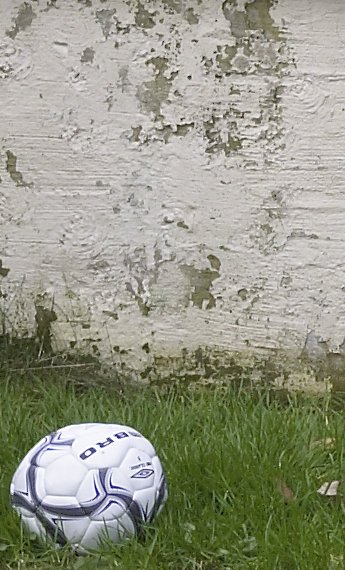 |
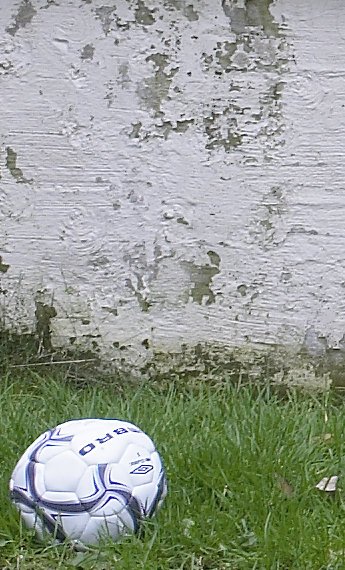 |
| Contax N 17-35mm at 35mm/f16 | Nikon 17-35mm AFS at 35mm/f16 |
|
0 points
|
1 point
|
Performance at 35mm: f16 (lower right corner)
 |
 |
| Contax N 17-35mm at 35mm/f16 | Nikon 17-35mm AFS at 35mm/f16 |
|
0 points
|
1 point
|
Close range, or at distance, the Nikon outperforms the Contax at 35mm to the last.
[nextpage title=”Flare & Ghosting”]
Flare & Ghosting / Internal Reflection: 20mm
With all those elements and potentially aberration inducing glass surfaces, ghosting is typically troublesome for most zoom lenses. Though their intensity and visibility varies throughout the zoom range, the basic pattern is consistent. Here are both lenses at 20mm positioned with a bright light at short range raking across the front element.
 Contax 17-35mm / 20mm
Contax 17-35mm / 20mm
 Nikon 17-35mm / 20mm
Nikon 17-35mm / 20mm
The Nikon 17-35mm f2.8 can be seen showing similar ghosting at a longer focal length in the 24mm World Cup Final, but top marks to the Contax: where’s the flare? With some coaxing, the tiniest of blobs were induced to materialise at 26mm, but in general, this lens is bulletproof with regard to handling bright lights: perfect for shooting directly into the sun, or twilight architectural photography. This is as bad as it gets . . .
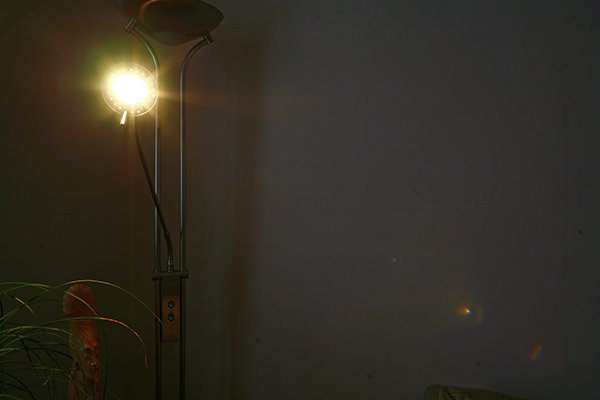 Contax 17-35mm / 26mm
Contax 17-35mm / 26mm
What about each lens’ ‘hoshi’? In other words, what kind of starburst is produced when a strong point light source is in the frame? Like bokeh once was, this is currently an overlooked aspect of lens performance, but one which makes a difference to the rendering of sunny skies, or in low-light photography where naked candles or street lamps appear in the frame. In some ways it is the flip side of bokeh, which attempts to describe, among other things, how a lens renders defocused points of light: here we’re talking about the rendering of in-focus points of light.
Good hoshi might be defined as an attractive and well delineated starburst, between the spokes of which maximum detail is retained and the effects of flare are minimised. The boundaries of the light source should be well defined and symmetrical, not suffering from coma. Bad hoshi might be characterised by a wide halo of overexposure in which resolution and contrast are lost, combined with indistinct or ugly radial spokes of light. Light source boundaries would appear to be defocused, aberration prone and asymmetrical. Needless to say, the effect varies with aperture, exposure and precise placement of the focal plane. Here’s the point illustrated by our two zooms, both at f5.6:
 Contax 17-35mm f2.8
Contax 17-35mm f2.8
 Nikon 17-35mm f2.8
Nikon 17-35mm f2.8
The Contax makes a better job of handling flare, retaining fine contrast all around the light source. It also draws the light source boundary more positively, but it has the same eight-pointed star at the Canon 24L, which some may not feel is as attractive as the ‘twinkly’ multi-pronged starburst rendered by the Nikon 17-35mm. As ever, the benchmark wide angle for truly stellar hoshi is the Contax 21mm Distagon f2.8!
For excellence is flare, ghosting and hoshi generally, the Contax 17-35mm is awarded a maximum of five points, with the Nikon awarded a bonus point for the way it decorates every light so prettily.
[nextpage title=”Distortion”]
Distortion Control: 17mm (full frame)
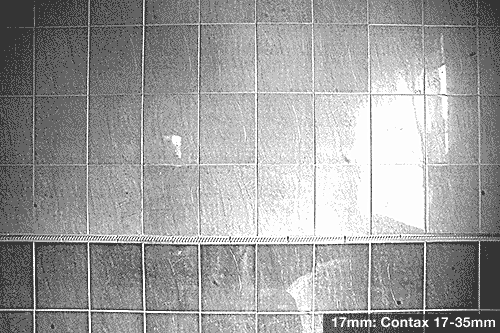
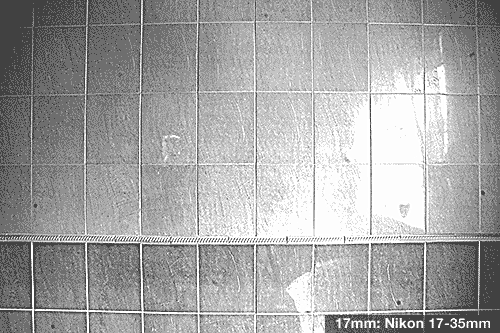
Precisely the same distortion pattern is evident at 17mm in both lenses. The extent of the Nikon’s barrel distortion is clearly more severe.
Distortion Control: 21mm (full frame)

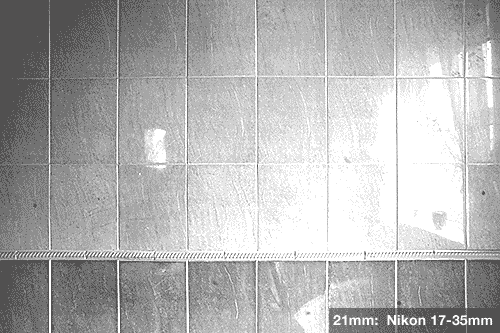
At 21mm, both lenses are equally en-route to pincushion distortion: the Contax is ruler perfect here; the Nikon requires an extra 1mm or so to iron out the last wrinkle of barrel distortion.
Performance at 24mm: (full frame)


The Nikon’s upturning corners are complicated by barrel distortion in the centre frame: much like a Zeiss 21mm. The Contax suffers from the problem, too, but to a less degree.
Performance at 35mm: (full frame)
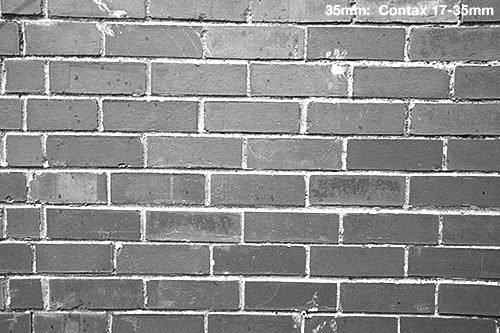
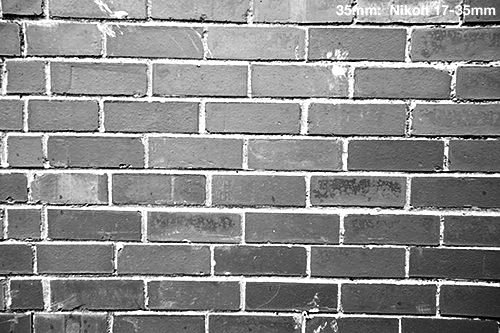
The 24mm range remains the most troublesome for both lenses in terms of distortion: by 35mm, the pincushions have deflated and both lenses are rather more neutral. A decent prime in this range would normally show traces of negative rather than positive distortion.
All in all, then, a clear victory for the Zeiss Contax (5 points): exactly the same quality of distortion, there’s just less of it. Finally, we review their control of chromatic aberration.
[nextpage title=”Chromatic Aberration”]
Chromatic Aberration: 17mm (upper right corner: samples at 200%)
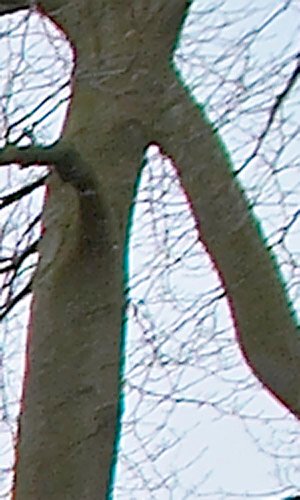 |
 |
| Contax N 17-35mm at 17mm / f8 | Nikon 17-35mm AFS at 17mm / f8 |
|
1 point
|
0 points
|
At 200%, the merest hint of red/green lateral CA is evident on tangential detail in this corner crop from the Contax, whereas the Nikon has rampaging blue/yellow fringing which is particularly evident on contrasty subjects placed in the corners.
Chromatic Aberration at 21mm: (upper right corner)
 |
 |
| Contax N 17-35mm at 21mm / f8 | Nikon 17-35mm AFS at 21mm / f8 |
|
1 point
|
0 points
|
Both zoom lenses handle CA better at 21mm than at 17mm, which is to say that the Contax is very nearly perfectly corrected, whereas the Nikon 17-35mm is still slightly problematic. In reality, unless you really go looking for it, it’s not going to blight your images.
Chromatic Aberration at 24mm: (upper right corner)
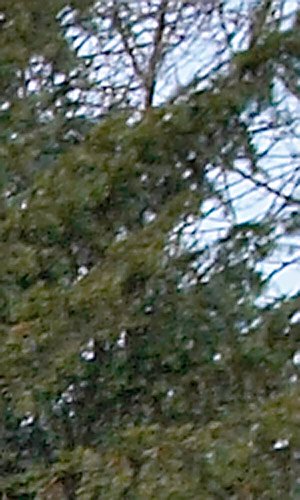 |
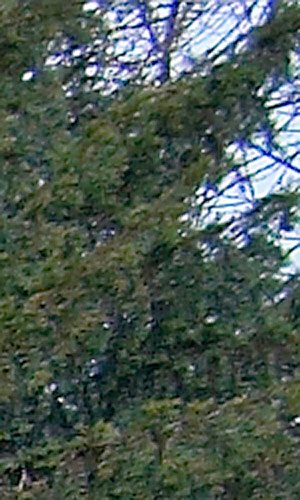 |
| Contax N 17-35mm at 24mm / f8 | Nikon 17-35mm AFS at 24mm / f8 |
|
1 point
|
0 points
|
There remains a little CA at 24mm in the Nikon shot, and it persists at this level until 35mm. It’s not disruptive, but the Contax is clearly superior in this regard. Note, though, that the Nikon reverses the Contax lens’ superiority at 24mm / f8.
No doubt by this point you’ll have formed your own verdict, and adding up the numbers isn’t really going to make much difference either way, but let’s summarise the findings . . . .
[nextpage title=”Conclusion”]
Purely considering ‘accutance, resolution, and microcontrast – ability to deliver maximum reality to the sensor – we can summarise thus:
• At 17mm, the lenses are equally sharp.
• At 21mm, the lenses are very, very similar – but the Nikon is slightly better.
• At 24mm, the Nikon is undeniably better.
• At 35mm, the Nikon is slightly better.
The Nikon’s advantage lies mainly in its excelling f8-f11 performance. Your particular shooting priorities will determine how important that is. If you work mainly at f11, that factor alone might bias you in favour of the Nikon.
However, considering flare resistance and correction for distortion and chromatic aberration, the Contax holds all the aces. It handles bright lights with uncommon aplomb and has exemplary correction for colour fringing.
Not to be underestimated is the sheer practicality of having such high quality optics mated with the convenience of autofocus and auto-aperture. Occasionally, you will get shots with the Contax that you would miss while faffing about with the Nikon’s manual controls on a Canon body.
In terms of build quality, reliability and handling, they are both indisputably from the top drawer. The Contax is a lot more expensive, but it could hardly be considered overpriced when you consider the package you get. And the Conurus conversion is irreproachable.
Whether the Contax is the lens for you will depend much on your preferred working methods, post-production skills and priorities: are you intending to use the lens primarily at 17-24mm or the 24-35mm? If the latter, you’d be better off hunting down a good copy of a Canon 16-35L or Leica 21-35mm.
If you’re looking for the best thing in the 19-23mm range, there is no substitute for the Distagon 21mm at the time of writing. If you’re wondering whether the Contax N 17-35mm is the next best thing, it may well be: but if you can live without the automation, and are prepared to build a few extra Photoshop actions into your workflow, the Nikon 17-35mm f2.8 will deliver equally stunning images for a lot less money – as long as you’re careful to avoid flare.
If the Contax didn’t suffer from a torus of low resolution around the centre frame, particularly at distance, it would be so much better than the Nikon you could cry. In response to questions about the size of ‘Area B’, I’ve added blue and red overlays to the Contax 17mm shot to show where it underperforms and outperforms the Nikon which, (coincidentally) has exactly the opposite problem. Here, blue is good (for the Contax) and red is bad. As you’ll notice, the worst of it is all at middle distance: at short range the problem was less evident in the test shots.

The final score, via our most recent, pretty arbitrary, grading system that simply puts a notch on the belt of the lens that performs best in each subcategory (ie, 24mm / f5.6: corners), proved to be 33 points for the Contax and 53 points for the Nikon.
